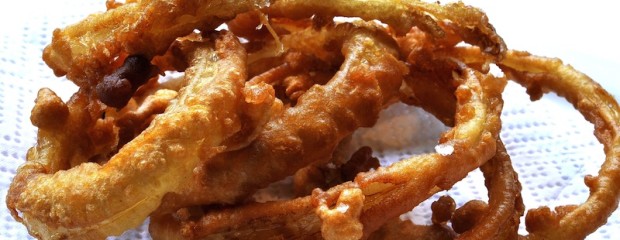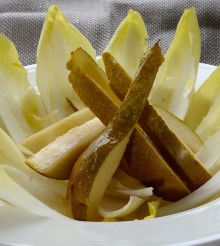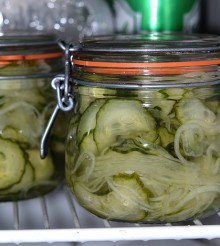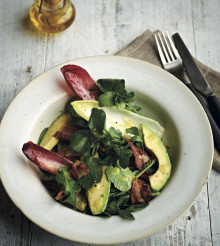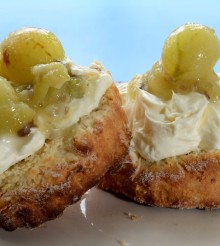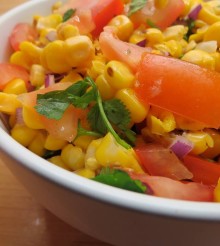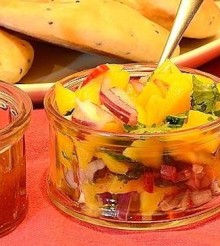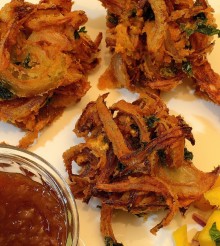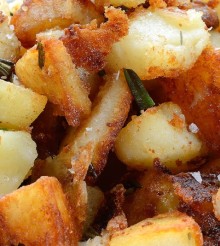Serve these with your meat and vegetable burgers, chicken, on salads, all sorts. Watch your oil constantly as you fry and never-over fill the pan with oil or cook too many rings at once. They’re good and crunchy.
Prep
- Leaving the onion whole, peel the skin away. Sit it on a board and using a sharp knife, cut it across into thin rings (1/2 cm). Separate the rings out. Set aside.
- Batter: sift the flour, bicarbonate of soda and salt into a large bowl. Beat the egg well. Throw it into a hollow in the centre of the flour together with a tablespoon of the milk. Use a small hand or electric hand held whisk to being mixing them together. Add the remaining milk little by little, whisking continuously. When it’s all in, creamy and silky without lumps, put it into the fridge to chill for 30 minutes or until you’re ready to f ry. Pre-heat oven to 180C/gas 4 to keep onion rings warm later.
Cook
- Prepare your deep-fat fryer or find a wok or a deep sided frying pan or saucepan. Add oil. Remember, never fill your pan more than one-third full when deep fat frying as fat rises as it heats and could overflow and catch fire. And the onion rings aren’t bulky so you don’t need too much anyway. Heat the oil to 190C – use a cooking thermometer to get and keep the oil at a constant temperature. If you don’t have one, add a 5 cm cube of bread to the oil and count to 10. Remove the bread with a spoon. If it’s crisp and just golden, the temperature is correct.
- Lay a large piece of kitchen paper onto a baking tray to drain the onion rings later.
- Drop a few of the onion rings into the batter and turn to coat them. Lift them out and add them to the oil just a few at a time (I use a slotted or wooden spoon to help). Take great care. And never over-crowd the pan. Always cook the rings in batches. Watch them closely for the 1-2 minutes they will take to cook. When they’re golden brown they should be done. Raise them up in the basket of your fryer or scoop them out with a slotted spoon. Sit them on the paper to drain. Keep them warm in the oven as you cook the rest.
Plate
- Sprinkle with fine sea salt just before serving so the rings retain their crispness.

